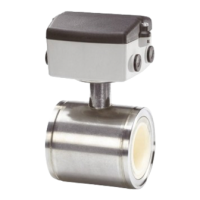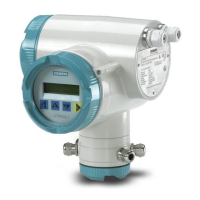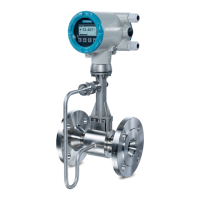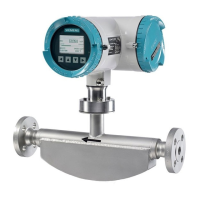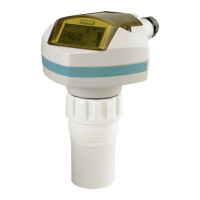2-79
1010ENFM-3B
Section 2
ditions. In the unlikely situation where the two images appear to be offset by one or more receive cycles
then the flow readings should be considered questionable.
Command Modes
Although the 1010 signal processing algorithms are capable of accommodating a very wide range of
signal conditions, it may be desirable to override these default settings under extremely difficult operat-
ing conditions. The following functions are available for this purpose:
Digital Damping Control: (Hot Key 1 and 2)
The FUE1010EN mode permits user modification of the digital averaging used by the signal processing
routines. In general, the default damping values selected by FUE1010EN will provide optimal perfor-
mance over a wide range of transit time applications. However, in extreme cases of unstable flow pro-
file, low signal levels or high aeration it may be necessary to override these default settings to permit
uninterrupted and reliable flow measurement.
The Graph Screen includes the capability to access a set of command codes, which enable a user to
override a number of default setup parameters. The most important parameter is the digital damping
control, which can be accessed by pressing number <1> or <2> on the keypad while in the graph
screen mode.
Pressing the <1> key will cause [MinDamp #] to appear on the command line at the lower left-hand
corner of the screen. The number listed to the right of the command code represents the exponent in the
FUE1010EN exponential averaging routine, where the larger the number the greater the digital averag-
ing. Pressing the <+> key will increase the damping value. Likewise, pressing the <-> key will decrease
the damping value. To exit this mode, press the <0> key on the keypad.
Pressing the <2> key will bring up the [MaxDamp] command. The function of this parameter is similar to
the [MinDamp] command described above, however, the two parameters interact in the following man-
ner. The MinDamp value must not exceed the MaxDamp value, therefore increasing the MinDamp value
above the previous MaxDamp value will set both parameters to the same value. In most cases, it is
preferred that both damping parameters be set to the same value, however, in cases where rapid
response to changes in liquid sound velocity is required, the two values may be set differently. In this
situation the meter will use the MaxDamp value when sound velocity is stable, but then switch to a faster
damping value (limited by MinDamp) when a significant change in sound velocity is perceived. To exit
this mode, press the <0> key on the keypad.
Transit Time Adjustment: (Hot Key 3)
Observe the short vertical marker at the beginning of the receive signal in the Graph Screen above. This
line represents the position in time (Tn) where the 1010 flowmeter perceives the arrival of the ultrasonic
signal. There are actually two Tn markers, one for the upstream arrival time and one for the downstream
arrival time. For proper liquid sound velocity measurement these Tn markers should be positioned near
the beginning edge of the receive waveform envelope (as shown), however, in cases of poor signal
conditions it is possible for this measurement to be off by several receive waveform cycles. To
adjust the Tn mark position press the <3> key on the keypad to bring up the [TnSet] com-
mand. Pressing the <+> or <-> keys will cause the Tn marker to move later or earlier, respec-
tively. As you adjust the Tn marker, both Tn and Vs (liquid sound velocity) will change accord-
ingly. To exit this mode, press the <0> key on the keypad.
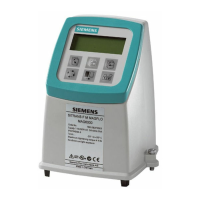
